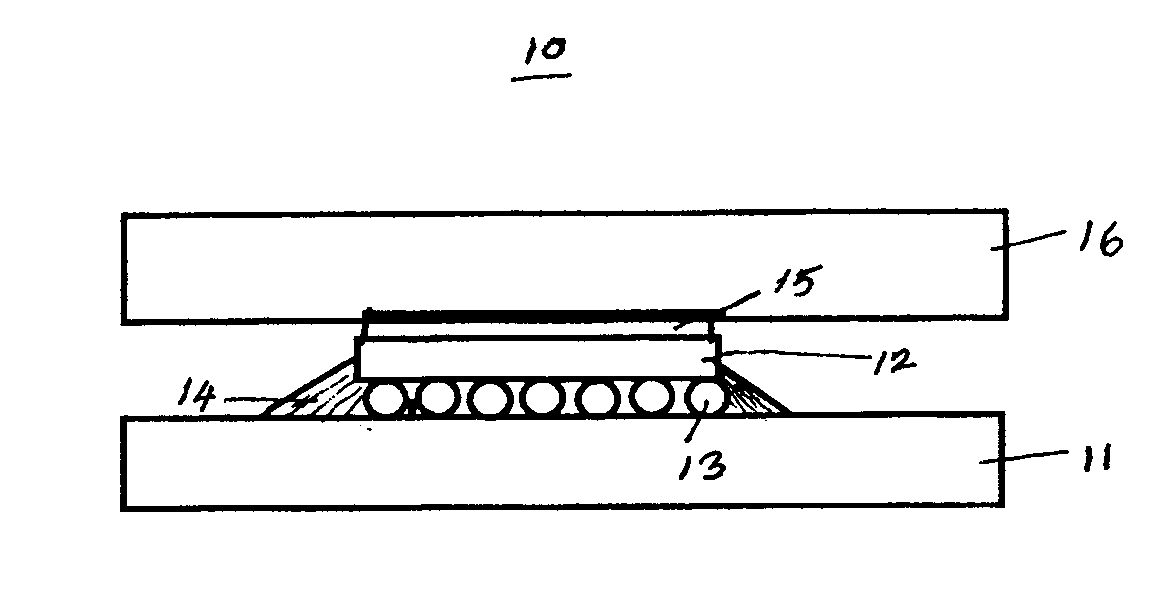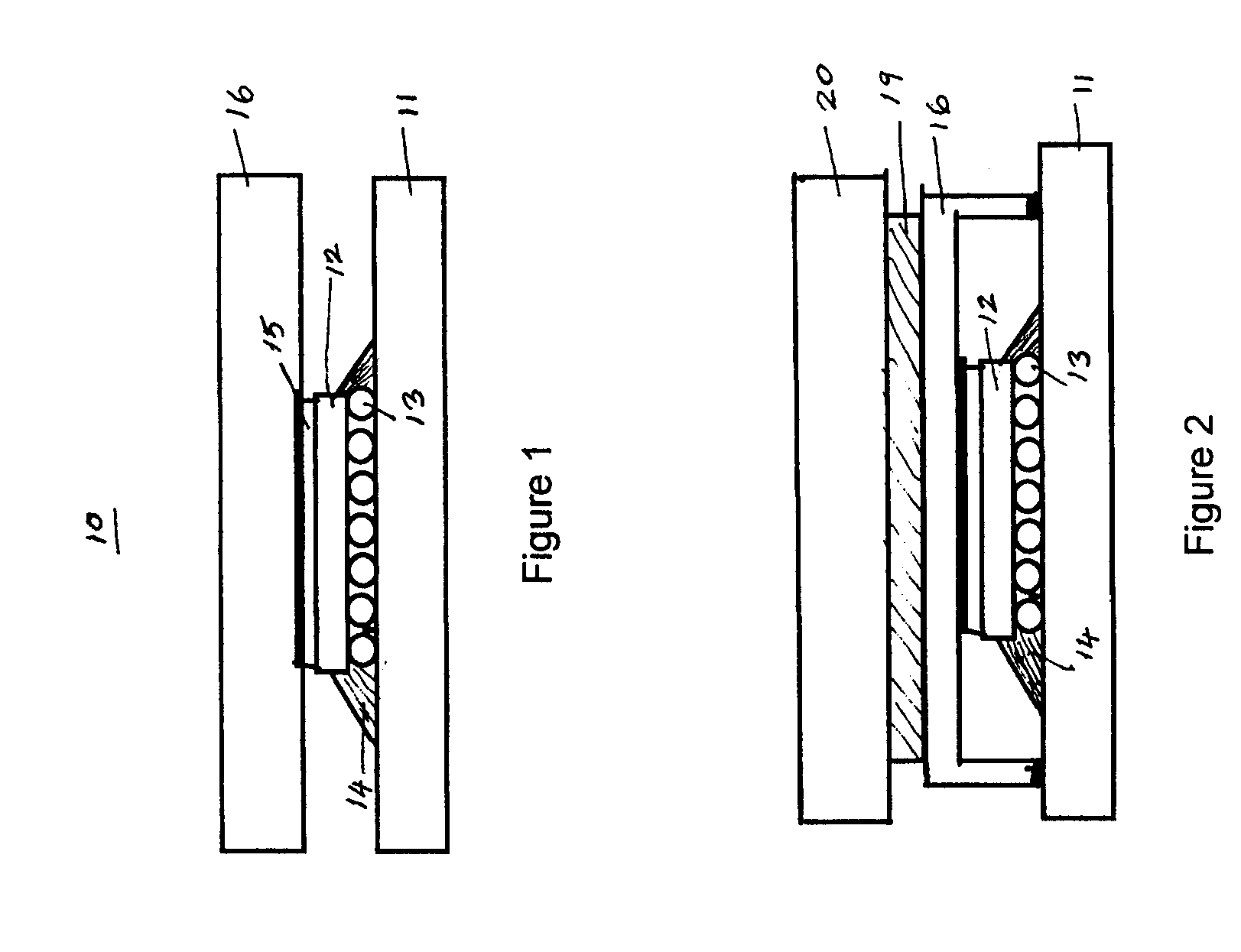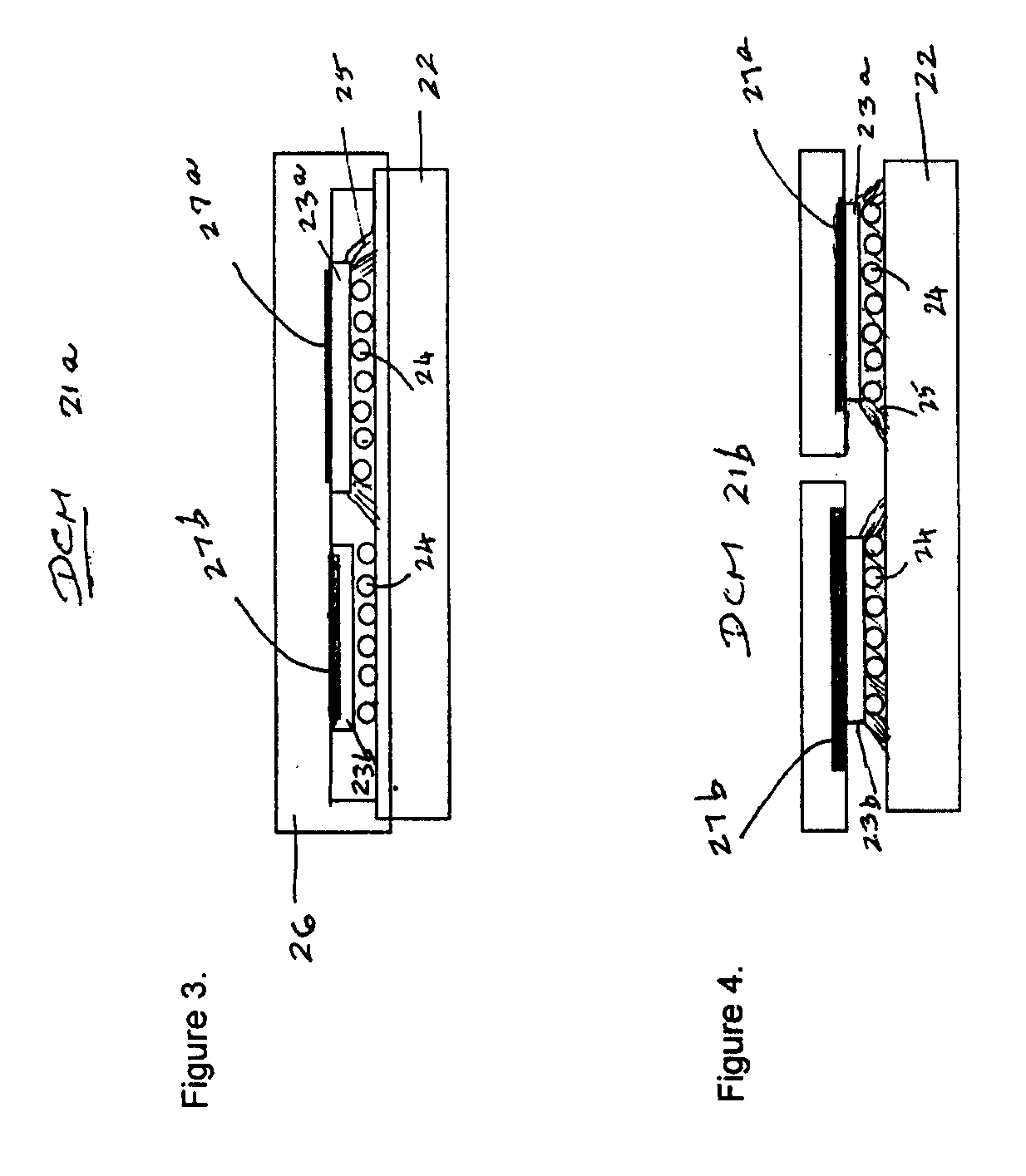Conductive adhesive composition
a technology of conductive adhesives and compositions, applied in the direction of conductors, semiconductor/solid-state device details, semiconductors, etc., can solve the problems of voids at the interface, excessive heat generation during device operation, and degrade device performan
- Summary
- Abstract
- Description
- Claims
- Application Information
AI Technical Summary
Benefits of technology
Problems solved by technology
Method used
Image
Examples
example 1
[0046] A soluble mixture of 7.8 g of a 1,3-bis(glycidoxypropyl)tetramethyl disiloxane and 1.3 g poly(n-butylmethacrylate) was prepared by heating with stirring at 70° C., then 2.2 g MeHHPA and 2.5 g HHPA was added and again allowed to stir until a clear mixture was formed. To this mixture was added 0.14 g nonylphenol+0.05 g ethylene glycol, and 0.03 g of the tertiary amine 2,4,6-tris(dimethylamino-methyl) phenol (DMP-30) and thoroughly mixed to form a clear homogeneous blend. About 65.5 g of Au-coated Ag filler were blended in this catalyzed mixture to form screenable conductive adhesive paste having about 82.5 wt % filler loading. The material was characterized for relevant properties and tested as a thermal interface material in conjunction with a SiSiC heat spreader. The data is summarized in table 1.
example 2
[0047] This example was a repeat of Example 1 except that in addition to MeHHPA and HHPA, about 0.2 g of methylnadic anhydride (NMA) was added to the composition described in Example 1. The filler type and % loading were kept the same. Relevant data on the characterization of the cured adhesive derived from this conductive paste are shown in table 1.
example 3
[0048] A soluble mixture of 17.5 g of a 1,3-bis(glycidoxypropyl)tetramethyl disiloxane, and 3.2 g of poly(n-butylmethacrylate) prepared according the method of Example 1. To 7.2 g of this mixture was added 5.5 g DDSA and 0.5 g MA, stirred to dissolve contents, and the catalyst system, 0.1 g nonylphenol and 0.15 g of 2,4,6-tris(dimethylaminomethyl)phenol (DMP-30) were added and thoroughly mixed to form a clear homogeneous blend. To obtain the conductive paste, about 65 g of Ag / Au filler (90% Ag / 10% Au wt % ratio), described in Example 1, was blended in this catalyzed mixture. The material was characterized for relevant properties and tested as a thermal interface material in conjunction with a SiSiC heat spreader. The data is summarized in table 1.
PUM
| Property | Measurement | Unit |
|---|---|---|
| particle size | aaaaa | aaaaa |
| thermal conductivity | aaaaa | aaaaa |
| thickness | aaaaa | aaaaa |
Abstract
Description
Claims
Application Information
 Login to View More
Login to View More - R&D
- Intellectual Property
- Life Sciences
- Materials
- Tech Scout
- Unparalleled Data Quality
- Higher Quality Content
- 60% Fewer Hallucinations
Browse by: Latest US Patents, China's latest patents, Technical Efficacy Thesaurus, Application Domain, Technology Topic, Popular Technical Reports.
© 2025 PatSnap. All rights reserved.Legal|Privacy policy|Modern Slavery Act Transparency Statement|Sitemap|About US| Contact US: help@patsnap.com



